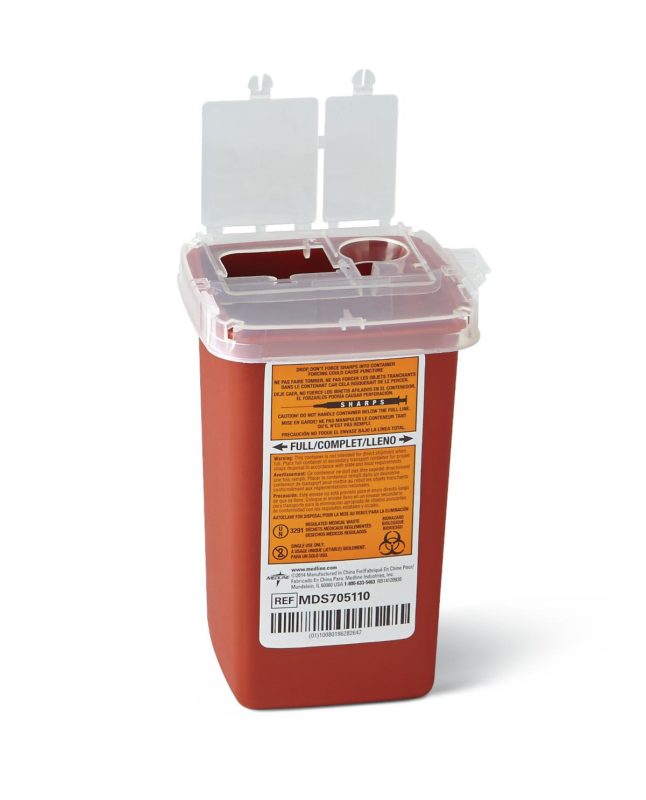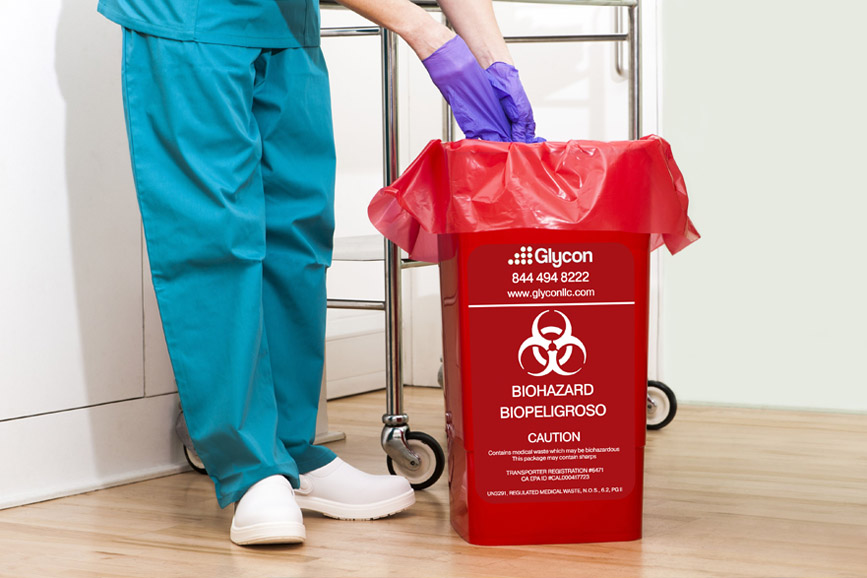Neighborhood Treatment: Smooth and Reliable Medical Waste Removal Near Me
Neighborhood Treatment: Smooth and Reliable Medical Waste Removal Near Me
Blog Article
Remain Ahead of Laws: Specialist Guidance on Medical Garbage Disposal
In a world where the healthcare market is regularly developing, it is important for medical centers to stay ahead of regulations when it comes to the appropriate disposal of medical waste. From understanding the different groups of clinical waste to carrying out the right collection and partition approaches, this conversation will certainly supply actionable ideas and useful understandings to assist centers remain ahead of regulations in the ever-changing landscape of medical waste disposal.
Recognizing Clinical Waste Categories
Understanding medical waste classifications is crucial for appropriate disposal and administration in health care centers. Medical waste refers to any type of waste generated by healthcare activities that may present a risk to public wellness or the atmosphere. It is essential to categorize clinical waste accurately to ensure its safe handling, transport, treatment, and disposal.
There are numerous classifications of medical waste that health care facilities need to be knowledgeable about. One of the most typical groups consist of contagious waste, pathological waste, sharps waste, pharmaceutical waste, and chemical waste. Each classification has details standards and regulations for its proper management and disposal.
Pathological waste refers to human tissues, organs, or body components that call for unique handling and disposal. Pharmaceutical waste comprises run out, unused, or polluted medicines that need mindful handling and disposal.
Staying Up-To-Date With Regulatory Modifications
Staying current with governing modifications is critical for medical care facilities to make sure compliance and proper administration of medical waste disposal. medical waste removal. With regulations regularly evolving, it is vital for healthcare facilities to stay current to prevent charges, penalties, and prospective injury to the atmosphere and public health
To remain ahead of regulatory changes, health care centers should establish a system for tracking and tracking updates. This can be done by signing up for governing e-newsletters, going to meetings and workshops, and actively taking part in industry organizations. In addition, facilities should assign a team participant or group in charge of staying informed and disseminating info to pertinent stakeholders.
Routine interaction with regulatory companies is likewise important. Healthcare facilities need to establish relationships with neighborhood, state, and federal agencies to ensure they understand any type of changes in laws that might influence their waste monitoring methods. This can be done with routine meetings, involvement in public remark durations, and aggressive interaction with regulative companies.
Furthermore, medical care centers should consider partnering with waste administration firms that focus on medical garbage disposal (medical waste disposal services with WasteX). These companies are commonly fluent in the most recent guidelines and can give assistance and assistance to make certain compliance
Applying Appropriate Collection and Segregation Techniques
To efficiently manage medical garbage disposal, healthcare facilities have to establish correct collection and segregation methods according to governing standards. Executing these approaches makes certain the risk-free handling and disposal of potentially harmful products, protects the setting, and minimizes the risk of infections and injuries to medical care employees and the basic public.
Correct collection and partition approaches entail using marked containers and labeling systems. Medical care facilities need to offer plainly classified containers for various sorts of clinical waste, such as sharps, transmittable waste, pharmaceutical waste, and non-hazardous waste. These containers ought to be color-coded and clearly marked to prevent confusion and promote very easy identification.
In addition, healthcare facilities ought to educate their team on the correct treatments for collecting and segregating clinical waste. This consists of enlightening them on the various kinds of waste, the suitable containers to use, and the value of following guidelines and guidelines. Regular training sessions and correspondence course should be carried out to make sure that team member continue to be updated on ideal methods.
Furthermore, health care centers need to develop a system for normal collection and disposal of medical waste. This might entail partnering with qualified waste management companies that specialize in medical waste disposal. These firms will certainly make sure that the collected waste is delivered and taken care of in conformity with regulative demands.
Picking the Right Disposal Techniques

Incineration is one of one of the most efficient and common techniques for taking care of specific sorts of clinical waste, such as pathological waste and sharps. It involves the regulated burning of waste at heats, minimizing it to ash. Incineration can launch dangerous pollutants right into the air and contribute to air contamination.

Various other disposal techniques consist of chemical treatment, microwave therapy, and landfilling. Chemical treatment involves using chemicals to reduce the effects of the waste and disinfect. Microwave treatment uses microwave energy to warmth and decontaminate the waste. Landfilling entails hiding the waste in a designated landfill location (medical waste disposal services with WasteX). Nevertheless, landfilling needs to be the last resort because of the prospective my blog threat of contamination to soil and groundwater.
Making Certain Conformity Via Documentation and Training
After carefully considering the appropriate disposal approaches for clinical waste, health care facilities must ensure conformity with regulations and lessen ecological impact by implementing effective documentation and training treatments. This step is important in maintaining a sustainable and safe setting for both medical care employees and the public.

Training is just as crucial in guaranteeing conformity with guidelines. Health care workers that manage clinical waste ought to receive appropriate training on waste segregation, managing, and disposal procedures. This training must cover topics such as the appropriate usage of individual safety devices, identification of different sorts of waste, and the correct disposal approaches for every waste classification. By offering thorough training, health care facilities can equip their personnel to make enlightened choices and lessen the threat of improper waste disposal.
Verdict
To conclude, remaining in advance of guidelines in clinical waste disposal is critical for health care centers. medical waste removal near me. Understanding the different categories of clinical waste, staying updated with governing adjustments, implementing appropriate collection and segregation methods, picking the suitable disposal techniques, and making certain conformity with documentation and training are all important steps. By adhering to these standards, health care companies can properly handle and dispose of medical waste in a safe and liable way
From understanding the various classifications of medical waste to applying the ideal collection why not try this out and partition methods, this conversation will certainly provide workable pointers and valuable insights to aid centers stay ahead of laws in the ever-changing landscape of medical waste disposal. - medical waste disposal services with WasteX
The most common categories include transmittable waste, pathological waste, sharps waste, pharmaceutical waste, and chemical waste. Health care centers need to offer clearly labeled containers for various types of clinical waste, such as sharps, contagious waste, pharmaceutical waste, and non-hazardous waste. Medical care centers need to establish a thorough system to record and track all elements of medical waste disposal, including types of waste produced, amounts, and disposal methods used. Healthcare workers that deal with clinical waste should obtain appropriate training on waste segregation, taking care of, and disposal treatments.
Report this page